6. BioFabricating Materials¶
Crafted materials¶
This week's assignment was really difficult to complete in an organized way. My work week was really busy and i only had one day where i could be at the lab. This meant i needed to get organized enough that i could just arrive at the lab and execute the recipes. But i didn't know which ingredients were available to me. So i decided to gather a lot of different recipes and to decide which one to make once i got to the lab and had a good visual on the ingredients.
Tools¶
- Class lecture
- Pot
- Stove
- spoon
- blender
- Scale or measuring Tool
- Molds, textiles, textures
Custom molds¶
I knew I wanted to try some kind of texture on my material so I started out by laser etching an acrylic plexiglass sheet with some artwork I had.
Here are the laser settings:
Trotec Speedy 300
Material: Cast acrylic plexiglass (etching)
Power: 100
Speed: 40
PPI/HZ: 1000
Passes: 1
Air assist: On
Z-offset: Manual

RICE STARCH RECIPE ATTEMPT¶
There was rice starch at the lab, but i didn't have a recipe for this. However, I did have a corn starch recipe so I decided to follow this one, and switch out the corn starch for rice starch.

As I was gathering the ingredients, I open the rice starch pouch and realised it was not starch, but rice. This meant i had to go through the additional steps of boiling the rice with water and making the starch. I was stressed and pressed for time and couldn't find a clear recipe for this process online. I decided to just keep going, try something and hopefully i will figure it out.
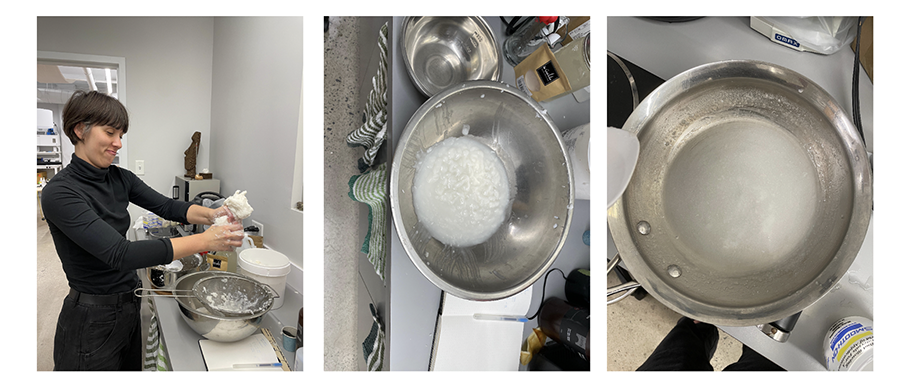
Then I tried to follow the corn starch recipe with the starch i harvested from the rice. As you can imagine, it was not a success. It did not solidify and became more like a sticky jelly. I think it might be because the starch recipe ir for powdered starch and i was using a hydrated starch mix.
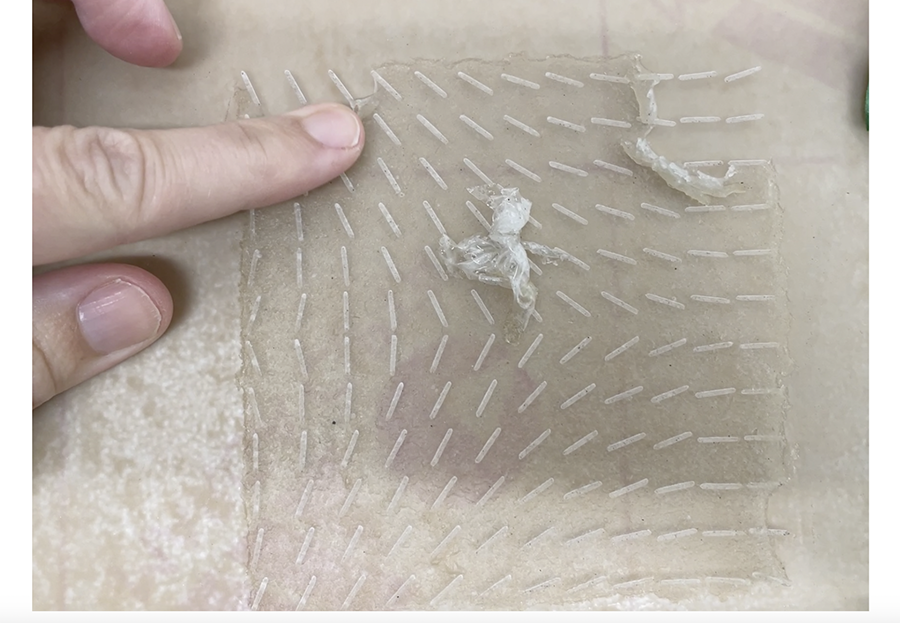
ALGINATE RECIPE ATTEMPT¶
In parallel to this rice starch mess, I was also attempting an alginate recipe I found here.
Here's an overview of this recipe:
 I slightly modified the recipe from the original and used vinegar instead of sodium chloride because i heard vinegar worked better.
I slightly modified the recipe from the original and used vinegar instead of sodium chloride because i heard vinegar worked better.
Here i am measuring and combining my ingredients in a pot.
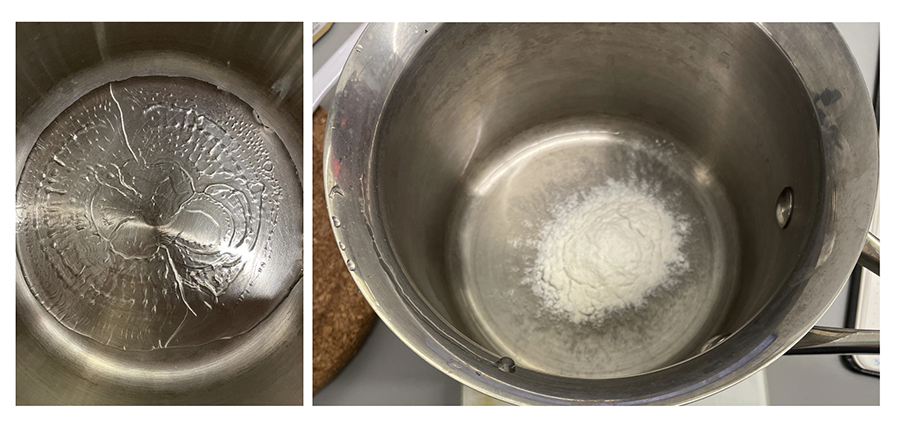 The recipe didn't need any heating or boiling, it only called for mixing the ingredients with a hand mixer or blender, and letting the mixture sit for an hour or so to remove the air bubbles.
The recipe didn't need any heating or boiling, it only called for mixing the ingredients with a hand mixer or blender, and letting the mixture sit for an hour or so to remove the air bubbles.
After letting it sit for an hour, I poured half of the mixture onto a baking tray, mixed with charcoal powder.
And the other half, I poured onto my textured mold. I sprayed both all of the mixture with vinegar.

I let it dry over the weekend and came back to the lab monday morning to find the following results:
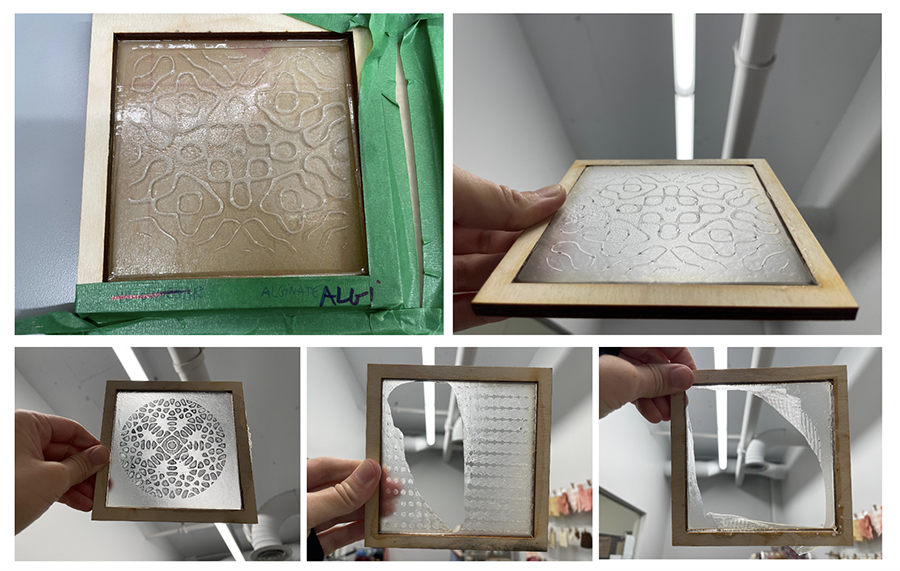
The aesthetic is really beautiful but it is really fragile, thin and sticky. I don't think it ever solidified. So I think I made a mistake somewhere along the way, probably using the vinegar, which was not part of the initial recipe. Thinking back, i should have also tried a sodium chloride mixture, so that i could compare results, but i din't think of it.

ALGINATE RECIPE RE-DO¶
I decided to take home some of the lab's equipment so that i could redo some recipes in my own kitchen, at my pace and with a better ability to focus. This time i decided to try Loes Bogers alginate bio foil recipe, changing the ratio but following the recipe word for word.
Here is the recipe:

Here are some process photos.
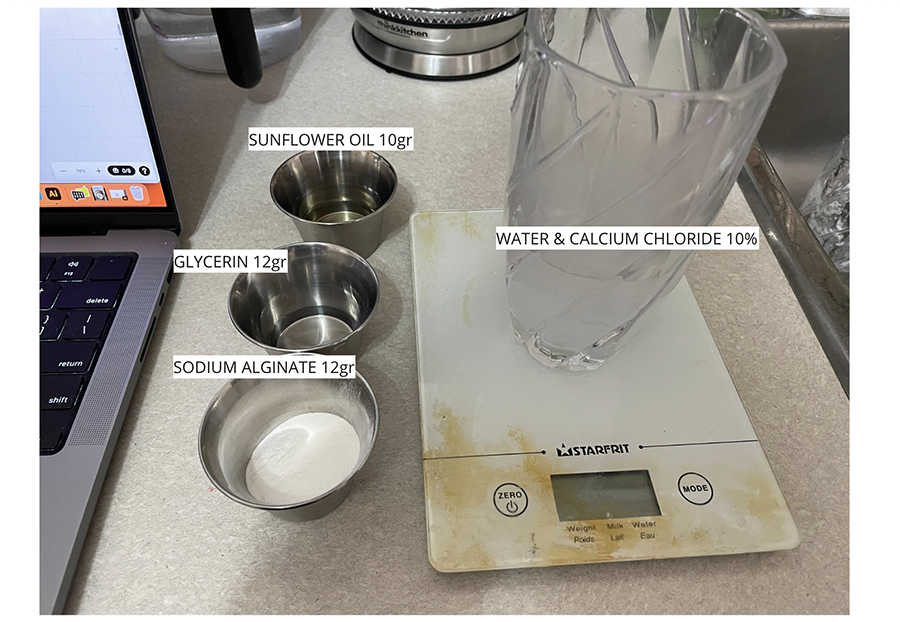
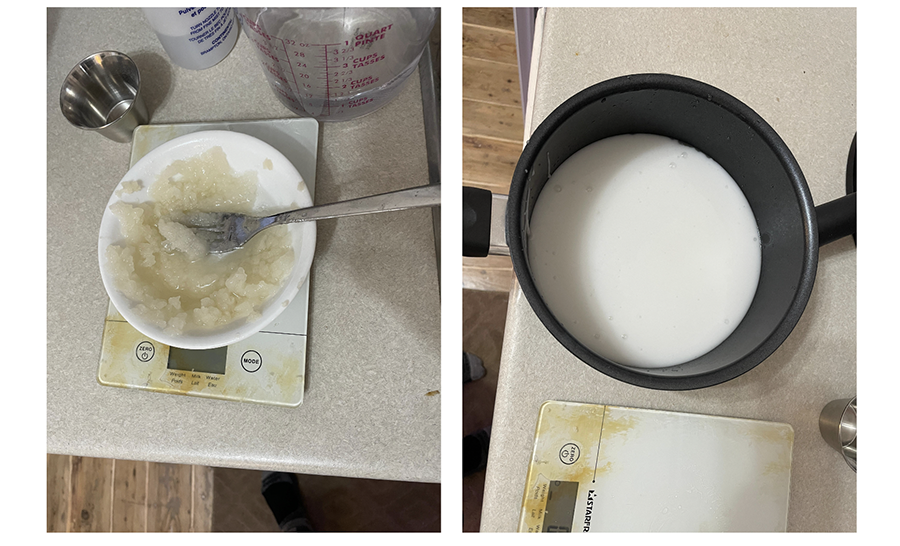
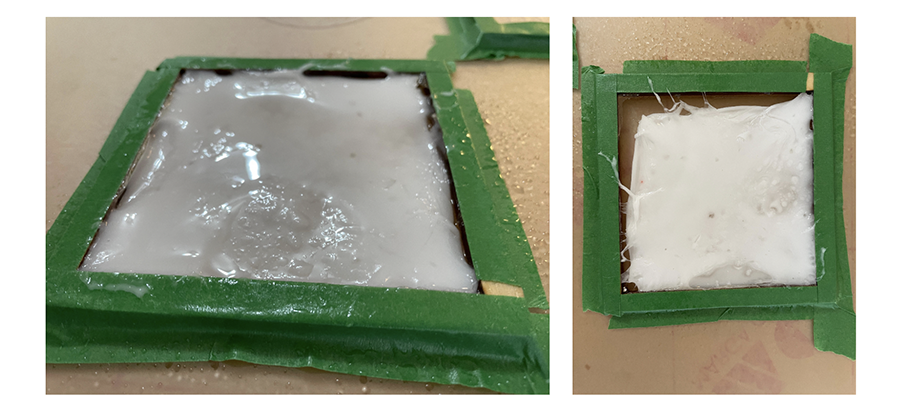
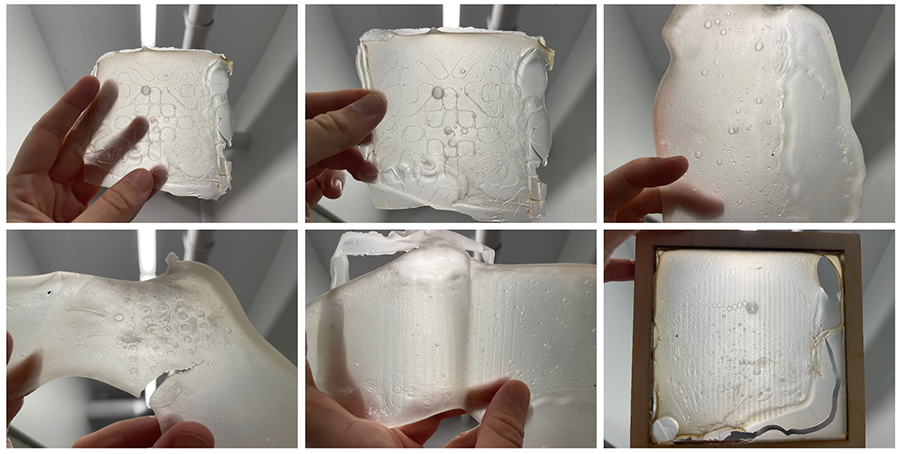
GELATIN RECIPE¶
Now, I'm happy my alginate bioplastic worked out, but i would like to try a bioplastic using a different polymer base. There was gelatin at the lab and i found a gelatin based recipe from Loes Bogers again. You gotta love Loes, she does a great job of documenting, it's very clear and organized.
Here is the recipe i followed, the instructions are recopied from Loes Bogers:
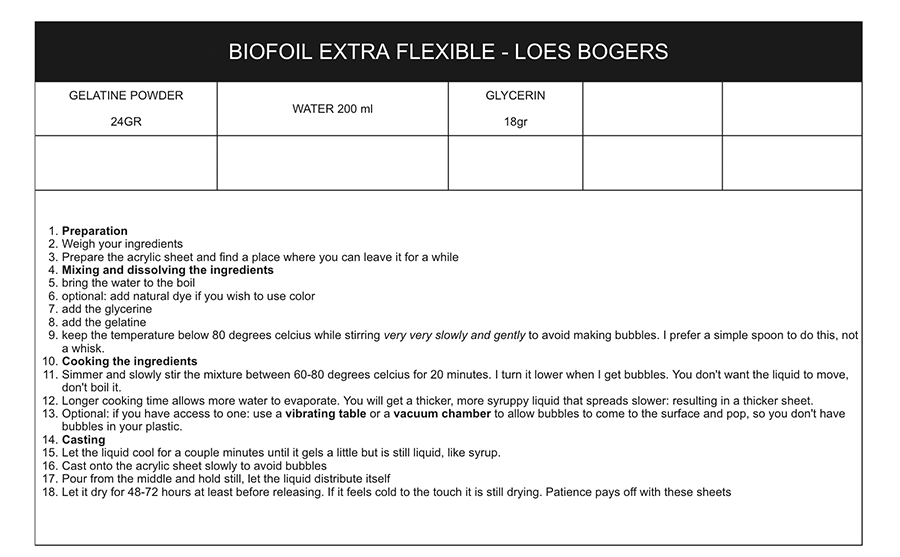
I simply brought the water to a boil and added my glycerin and gelatin.

Once the ingredients are all mixed in i gently stirred on low heat, letting it simmer until it gets to a syrup like consistency. When it feels like a syrup, i took it off the heat, let it cool down for 5 minutes and poured i into my molds.
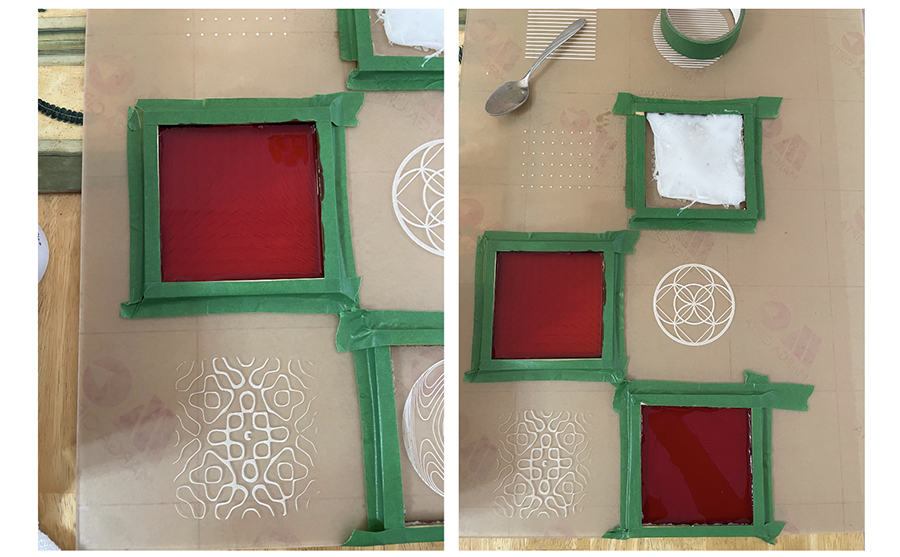
This recipe never solidified and I think it's because of the gelatin was sweetened. I did some research into this and found a video that confirms this result. In the video, they try out 3 gelatin recipes. The ratios are all the same, the only difference is the type of gelatin used: neutral sheet gelatin, neutral gelatin powder and a sweet gelatin powder. As you can see at 3:15, the sweet gelatin recipe doesn't produce a manageable plastic.
Grown materials¶
For the grown materials i was very inspired by the textiles created by root systems which were shown during the weekly lecture. I want to figure out how to direct the growth of the roots into a pattern.
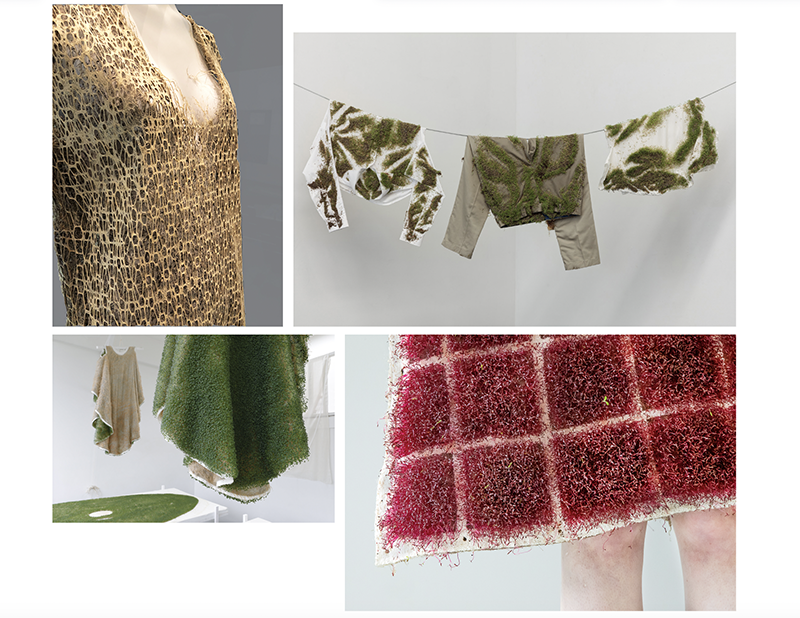
Tools¶
- Grow lights
- Black chia seeds
- flat tray, preferrably made of clay
- Mesh or other textile
- Laser cut acrylic mold
Process¶
I wasn't exatly sure how to go about this as i couldn't find any instrucitons online for how to do this. So my instructor Annie recommended i do a rough trial where i place different things at the bottom of a tray, and try to grow something onto it. I thought that was a good place to start. I also decided to use chia seeds, since i could easily buy it at the local grocery store.

I found some an instructables post on how to sprout chia seeds and loosely followed this. They recommend covering the seeds, so i covered my plate with something that would let the light through, clear cling wrap. I got some grow lights from the local hardware store and set up a spot on a shelf where i could let it do it's thing.

Here I check up on them every now and then:

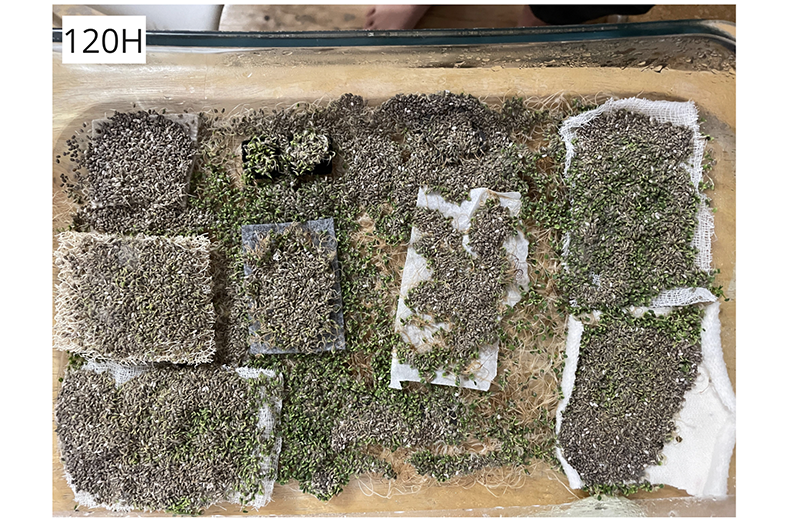
Results¶
| Material pic | Material | Observation |
|---|---|---|
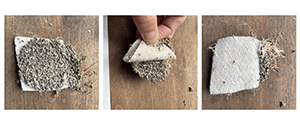 |
Woven wool | The chia seeds did not sprout |
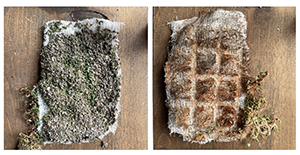 |
Gauze + plastic with recessed shapes | Some seeds have sprouted (not all), the roots penetrated through the gauze and the roots arranged themselved in the pattern of the plastic container. Promising! But the roots are a rotting |
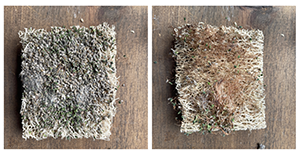 |
Gourd sponge | Some seeds have sprouted (not all), the roots penetrated through the grouds structure. A lot of mold growing on this sample |
 |
Cotton fleece | Half of the seeds have sprouted. The roots have penetrated the material through the laser cut holes only. |
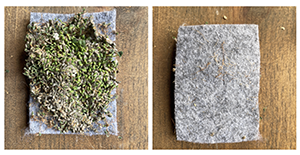 |
Felt | Most of the seeds have sprouted on this one. The roots have not penetrated the material. |
New trial¶
Based on the rough trials, I decided to redo another round and use a plexiglass mold (i created during the soft robotics week: download file here 2) in the same way i used the plastic gum package. That first trial was not perfect because the roots were rotting, but I'm not sure how to fix that yet, so one thing at a time.
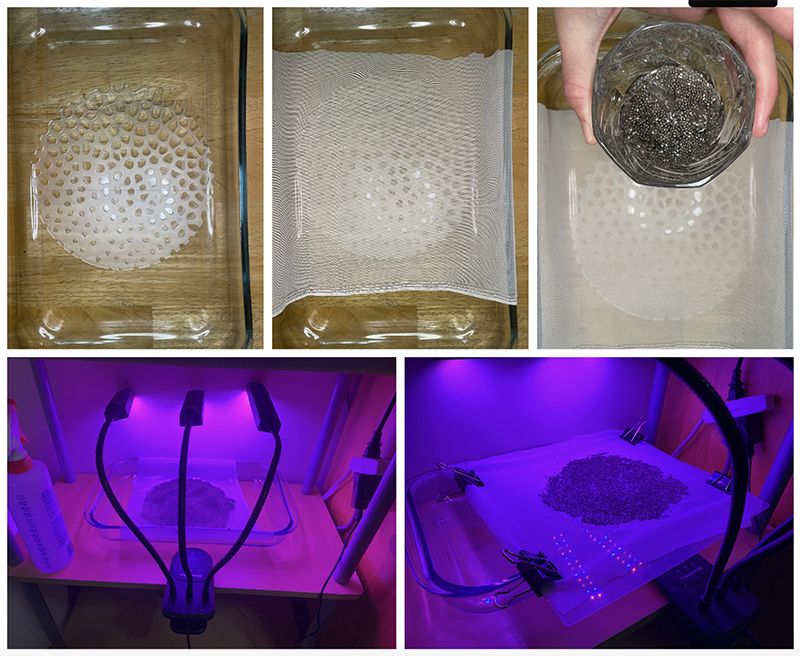
Results¶
Coming soon